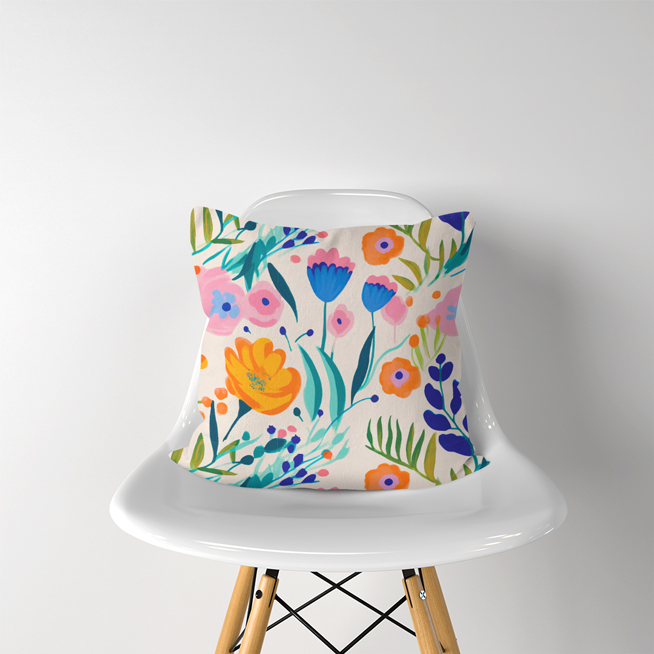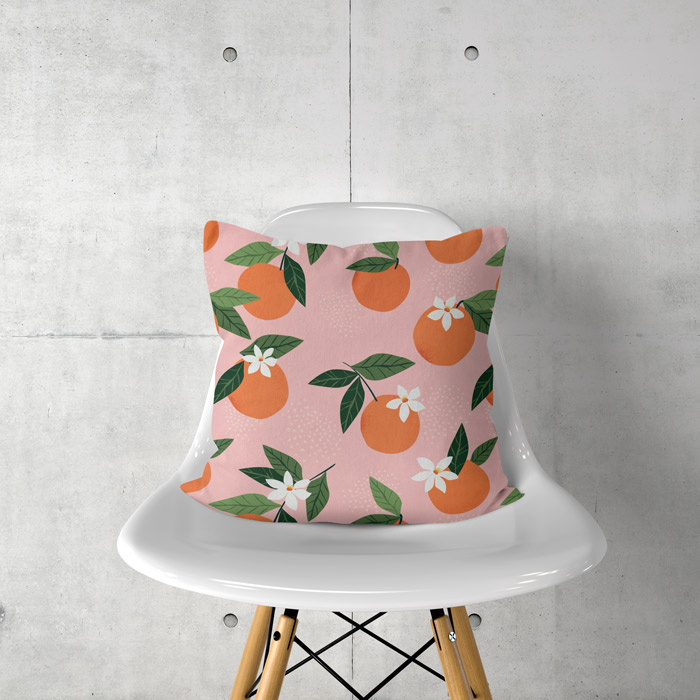Seat cushions are not only practical accessories, but also an important element of interior design. Choosing the right fabric can make a significant difference to the comfort and durability of the cushions. What fabrics work best and why should you pay attention to their properties? Read on!
Table of Content
- Why is the choice of the right fabric crucial?
- What fabric should I choose for my seat cushions?
- What should I consider when choosing a fabric for my seat cushions?
- Patterns on seat cushions – is it worth it?
- Which fabric works well on seat cushions? Summary
Why is choosing the right fabric crucial?
When deciding on the manufacture of seating cushions, there are several key aspects to consider. The comfort of use, the durability of the fabric and its resistance to wear and tear are the most important criteria that will determine user satisfaction and the longevity of the product.
Comfort and ease of use
Comfort is one of the most important characteristics that seat cushions should have. The fabrics we choose must be pleasant to the touch and provide the necessary softness. A high level of comfort makes us more willing to use the cushions, which in turn affects our well-being and relaxation.
Durability and resistance to wear and tear
Another key criterion is the durability of the fabric. Seat cushions are subjected to intensive use, so the fabric should be resistant to abrasion, stretching and staining. It is also a good idea if the fabric shows resistance to mechanical and weather conditions, which is particularly important for cushions used outdoors.

What fabric should I choose for my seat cushions?
When choosing a fabric for your seat cushions, it is worth considering different options that will meet your expectations in terms of comfort, durability and aesthetics.
Linen
Linen is a material that works well for seat cushions, especially those designed for outdoor use. It is weather resistant, durable and does not deteriorate when exposed to moisture. In addition, linen has good breathability, which ensures comfort even on warm days. It is ideal for garden cushions and those used in the dining room or kitchen. Its natural appearance and soft texture bring cosiness and elegance to the interior.
Polyester is a flexible fabric that is resistant to damage and fading. It is durable, which means that cushions made from polyester will last a long time. In addition, polyester is easy to clean, which is a great advantage for everyday use. Thanks to its resistance to moisture, polyester is perfect for both indoor and outdoor use.
Outdoor Fabric is an excellent choice for garden cushions. It is extremely resistant to mechanical factors, making cushions made from this material durable and long-lasting. In addition, kodura is weather resistant, making it the ideal fabric for cushions used outdoors. The fabric is also highly abrasion-resistant and waterproof, ensuring long-lasting functionality. This makes Outdoof Fabric cushions an excellent choice for terraces, balconies and gardens.
Velour is a fabric that works well for decorative cushions. Its aesthetics, elasticity and durability make cushions made of velour add elegance and comfort to interiors. Velour is soft and pleasant to the touch, which increases the comfort of use. Its light sheen adds a luxurious touch to interiors. Velour is also resistant to fuzzing, which guarantees an aesthetically pleasing appearance for a long time.
Jacquard
Jacquard is a fabric that will work particularly well for decorative cushions. It is shiny and elastic, which gives it an elegant appearance. The fabric is also hardwearing, so cushions made from jacquard will be durable and stylish. Jacquard is distinguished by its rich patterns, which add a sophisticated touch to interiors. Its structure makes it a fabric that is not only decorative, but also functional. It is ideal for living room cushions, where it will play both a decorative and functional role.
What should I consider when choosing a fabric for seat cushions?
Choosing a fabric for your seat cushions requires you to think about a few key issues that will determine the functionality, durability and aesthetics of the finished product. Thinking about the purpose of the cushions and the conditions in which they will be used will help you make the best choice of fabric. Here are some aspects to consider:
- Intensity of use: If the cushions will be used intensively, for example in the dining room or kitchen where we sit down for meals every day, it is essential to choose a fabric that is durable and abrasion-resistant. Fabrics such as polyester or codura are excellent choices in this case. Polyester is easy to clean and resistant to damage, which is extremely important in areas where cushions are exposed to frequent soiling. Kodura, on the other hand, will ensure long-lasting functionality and aesthetics of the cushions thanks to its high resistance to mechanical factors.
- Outdoor resistance: garden cushions must be made of weather-resistant fabrics. In this case, fabrics such as linen and Outdoor Fabric will work best. Linen is a natural fabric that stands up well to moisture and is resistant to sunlight, making it an ideal choice for garden cushions. Outdoor, with its waterproof and abrasion-resistant properties, ensures durability and comfort even in harsh outdoor conditions.
- Decorative function: If the cushions are to serve primarily a decorative function, it is worth paying attention to the aesthetics of the fabric and its visual properties. Fabrics such as velour and jacquard will be an excellent choice for elegant interiors. Velour, with its softness and light sheen, will add a luxurious feel to the interior. Jacquard, on the other hand, with its rich patterns and glossy texture, will bring sophistication and style to a room.
- Easy care: Cushions that will be used frequently should be made from fabrics that are easy to clean. Polyester is one of the easiest materials to care for, as it is machine washable and stain-resistant. Fabrics that are easy to clean are especially important in homes with children or pets, where cushions are subject to frequent soiling.
- Appearance and style: the final choice of fabric can also depend on the style of the interior and personal aesthetic preferences. Natural fabrics like linen add cosiness to interiors and are ideal for Scandinavian or rustic styles. Polyester and codura will work well in modern, minimalist interiors thanks to their functionality and simplicity. Velour and jacquard, on the other hand, are perfect for classic, elegant settings where luxurious aesthetics and refined details are important.

Patterns on seat cushions – is it worth it?
Patterns on seat cushions can be a great way to add character to interiors, personalise spaces and express individual style. For decorative cushions, patterned fabrics such as jacquard or velour with rich motifs add elegance and sophistication. The possibilities of printing on the fabric open up a wide field for creativity – you can choose from geometric patterns, floral motifs or abstract compositions, making cushions not only a comfortable furnishing item, but also an expressive decoration.
However, when it comes to cushions for everyday use, such as those for dining room or kitchen chairs, muted colours and simple patterns are often preferred, which blend easily with the rest of the décor and do not dominate the space. The choice of patterns should also be tailored to the brand’s target audience – younger generations may prefer modern, colourful designs, while older customers may value classics and elegance.
Patterns can also be effective in masking minor dirt and stains, which is a great advantage for cushions used on a daily basis. In addition, the use of unique patterns can differentiate a brand in the market, attracting customers looking for unique and original products. The final choice of designs on seat cushions should be well thought out and tailored to the needs and expectations of the target group to ensure user satisfaction and to differentiate the brand in the market.
What fabric will work well for seat cushions? Summary
Choosing the right fabric for seat cushions depends on a number of factors, such as comfort, durability, wear resistance and aesthetics. Linen, polyester, codura, velour and jacquard are fabrics that can meet a variety of requirements and will work perfectly depending on the purpose of the cushions. Remember that the right choice of fabric is the key to user satisfaction and product longevity.





